
views
Developing Your Response

Read the opposing party's motion. When the opposing party files a motion JNOV, it will be served on you and/or your attorney soon after the jury verdict is released. The motion JNOV will contain, among other things, a table of authorities and legal arguments attempting to persuade the judge one way. The content of your opposition will depend on what the other party has said in their motion JNOV. Therefore, you need to read the opposing party's motion and understand why it is being filed. Your job in your opposition will be to defend yourself and counter any factual or legal arguments the other party made. For example, if the other party relies on facts you do not believe are true, you can correct them in your opposition. In another example, if the other party cites to laws you don't believe apply or you believe have been applied incorrectly, you can provide your own analysis in your response.

Research the cited law. Once you have read the opposing party's motion JNOV, take note of the legal authorities he or she cited to when making their arguments. Use these citations to research the law of motions JNOV. Do not only rely on the authorities the opposing party cited to. Be sure you do your own research to look for any cases or statutes favorable to you. Generally, JNOV law dictates that a judge will disregard a jury verdict and rule in favor of the moving party only where no substantial evidence exists to support the verdict. When a judge looks at the evidence, he or she will disregard all conflicting evidence and will make every legitimate inference that supports the jury verdict. Therefore, your opposition memorandum needs to cite to cases and laws expanding on the meaning of "substantial evidence."

Know your local rules. Your opposition memorandum will need to be drafted in accordance with the rules of civil procedure adopted by the court you are in. Each court will require documents to use certain fonts, spacing, and lengths. In addition, courts may ask for copies and other documents to be filed along with your opposition memorandum. For example, in order to oppose a motion in the Central District of California, you have to file a memorandum of points and authorities in opposition to the motion, a declaration in support of your opposition, and a proof of service form. The memorandum cannot be longer than 25 pages and it must be filed at least 21 days before the hearing. The memorandum must be written on pleading paper, using 14-point font, one inch margins, and it must be double spaced.

Develop your arguments. Using the legal authorities you found in your research and the arguments the other party made in their motion JNOV, you need to craft arguments you will use in your memorandum to counter the other party. Be thorough and utilize every argument in your favor. Even if arguments contradict each other, use them. Judges will look at each argument separately. When you are thinking about your arguments, consider how you want to order them in your memorandum. Your strongest arguments should be up front, your weaker arguments should be in the middle, and you should finish well with other strong arguments. You never want to begin or end with weak arguments. Generally, "substantial evidence" is evidence that has some legal significance. It should be reasonable, credible, and of solid value. The focus is usually on the quality of the evidence, not on the quantity. When it comes down to it, the judge will have to decide if it was reasonable for the jury to make the decision it did in light of the record. Your arguments should use these legal standards and explain why the facts of your case require a denial of the other party's motion JNOV. Your arguments will combine law and facts to persuade the judge to rule in your favor.
Drafting Your Responsive Memorandum

Include a caption. Your opposition memorandum will begin with a caption page that identifies the court, the parties, the case number, the hearing information, and the title of the memorandum. All of this information needs to be formatted properly so be sure you look at examples for help. The title of your memorandum should be something similar to: "Memorandum in Opposition to Motion for Judgment Notwithstanding the Verdict." The rest of the information can be found on almost any motion or memorandum you have presented to the court prior to this.
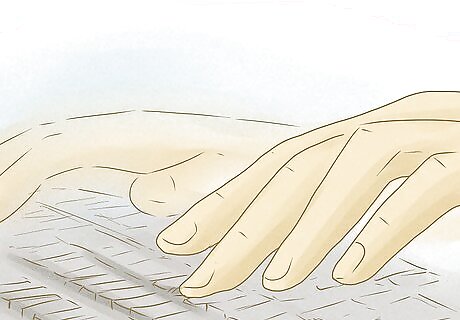
Create a table of authorities. The beginning of your opposition memorandum should contain a list of the legal authorities you relied on to write it. It should contain proper citations to the cases, statutes, and other legal authorities, as well as the page number of the memorandum where they can be found. This introductory table is extremely important because it gives the Judge a quick overview of your legal analysis. The judge should be able to look quickly at your table and determine whether you have made appropriate arguments. If the judge has questions, he or she can look up the law using the citations you used.
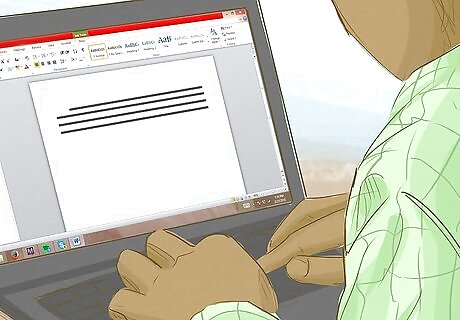
Write an introduction. Your memorandum should start with a brief introduction outlining the purpose of your opposition. The introduction should contain the procedural background to your case as well as important factual information. You will explain that the opposing party has filed a motion JNOV and you are responding. You need to explain what the jury verdict is and the substantial facts that exist to support that jury verdict. While you should make it clear in the introduction that the motion should be denied, do not spend too much time discussing legal precedents. Your legal arguments will be laid out alter in the memorandum.
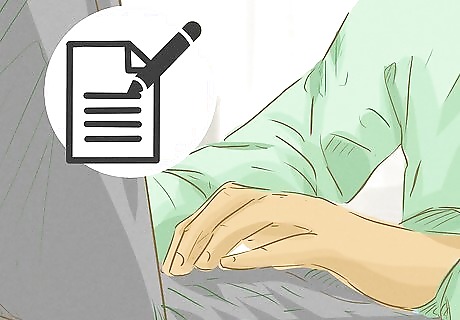
List your reasons for opposing the motion. This is the meat of your opposition memorandum. It will lay out your legal arguments for opposing the other party's motion JNOV. Be sure you include the correct legal precedent and a persuasive legal argument that contains the facts of your case. Remember, your goal is to counter any arguments the other party made in their motion JNOV and explain why "substantial evidence" exists that backs up the jury's original verdict. For example, if the other party listed several pieces of evidence presented at trial that they believe were not substantial based on the legal definition of "substantial", you might provide evidence that wasn't listed but that you believe is substantial. In addition, you might provide an alternative definition of "substantial" if you believe the other party's definition is misleading or wrong. Be sure you back up all of your arguments with solid facts and persuasive law.

Make a signature block. The end of your opposition memorandum needs to contain a quick conclusion followed by space for signatures. Your conclusion should state that, based on the reasons provided within your memorandum, the motion JNOV should be denied. The signature block should contain the date and the names of everyone involved in writing the opposition memorandum. Make sure those people sign the opposition memorandum before it is served on the other party or filed with the court.

Create a declaration page. Most courts will require you to attach a declaration page to your memorandum. A declaration is a sworn statement to the court where you will write the facts that support your opposition. The declaration will begin with a caption page that mirrors that of the memorandum. The only difference will be the title, which will be something like: "Declaration in Support of Opposition to Motion Notwithstanding the Verdict." You will then declare that you are a party to the case and that you have personal knowledge of the facts that will be listed within the declaration. You will follow up the declaration with the facts. End the declaration with your signature.
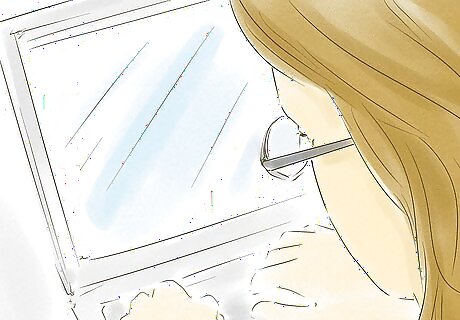
Draft a proof of service form. Every piece of paper you file with the court needs to be served on the other party. Once the other party has been served, your server will need to sign and date a proof of service form declaring that service was performed. You need to draft a form that can be signed by the server. This form will start, as usual, with a caption. You will then state that someone has served the appropriate documents on the other party. At the end of the form, leave space for the server to sign and date it.
Filing Your Responsive Memorandum

Sign your memorandum. In the signature block of your opposition memorandum, and in the signature block of your declaration, you and your attorney need to sign in the appropriate spaces. These signatures act as promises that the papers being filed were filled out in good faith and to the best of your ability. No memorandum will be accepted without these signatures.

Serve your response. A copy of your opposition memorandum and declaration need to be served on the other party before they are filed with the court. Do not serve the originals on the other party. Your original documents will be filed with the court. At this stage of the litigation, it is usually acceptable to simply mail copies of the documents to the other party's attorney. Someone over the age of 18 who is not a party to the action will have to complete service for you. Once service has been completed, the server needs to sign the proof of service form and give it back to you.

File your documents at the courthouse. Take your original memorandum, declaration, and proof of service to the courthouse where your trial was held. Bring your documents to the clerk of courts and have them stamped as "filed." Most courts will ask you to file a certain number of copies along with the originals.

Analyze any reply. The other party can choose to file a reply to your opposition. If they choose to do so, they must file and serve it on you at least 14 days before the scheduled hearing. You will not be able to file a response to the other party's response unless you have the permission of the court.
Arguing Your Responsive Memorandum
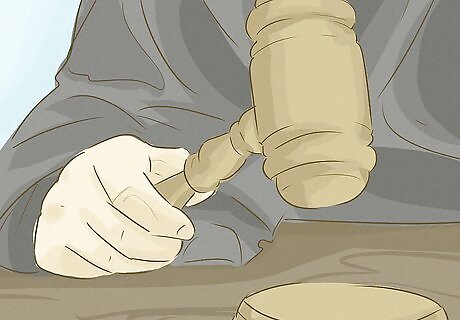
Show up for your hearing. The court can choose whether to hold oral arguments on the motion JNOV. If the judge thinks he or she has enough information by reading the briefs, they can simply make their decision based on those. If the judge does hold a hearing, you need to show up. If you don't, the judge will be more likely to rule in the other party's favor. Make sure you give yourself extra time on the day of the hearing so you can get through security and find your courtroom.

Talk with the judge. When your case is called, walk up to the front of the courtroom and address the judge. He or she will ask questions about your opposition memorandum. Answer the questions asked of you directly and concisely. The judge will likely ask you for clarification on things or may push you on your legal arguments. In addition, the judge will want to hear what counter-arguments you have to the party's arguments. Therefore, ensure you know the other party's motion JNOV well. Make sure the judge leaves the hearing with a good understanding of what your arguments are.

Listen to the other party's arguments. The judge will also want to hear from the other party. The judge will ask the other party to respond to your arguments, make their own arguments, and defend their position. Listen carefully to the other party's responses and be ready to reply. Try not to interrupt the judge or the other party while they are talking. However, make sure you make all of the points you want to and you respond when necessary.
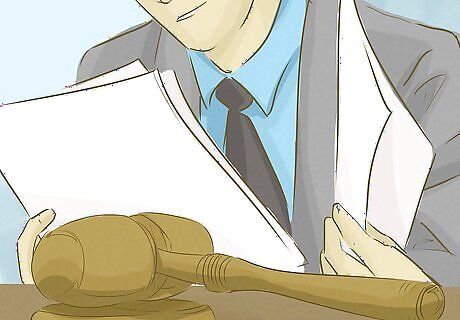
Await the judge's decision. After the judge has heard from both parties, he or she will issue their decision. The judge may choose to decide on the motion immediately after the hearing while you and the other party are still in the courtroom. However, the judge may want to take more time and consider everything that was heard. If this is the case, the judge will make a decision and inform you of it once it is made. If you win, the motion JNOV will be denied and the jury's verdict will be upheld. If you lose, the judgment will be thrown out and the judge will issue their own verdict.




















Comments
0 comment